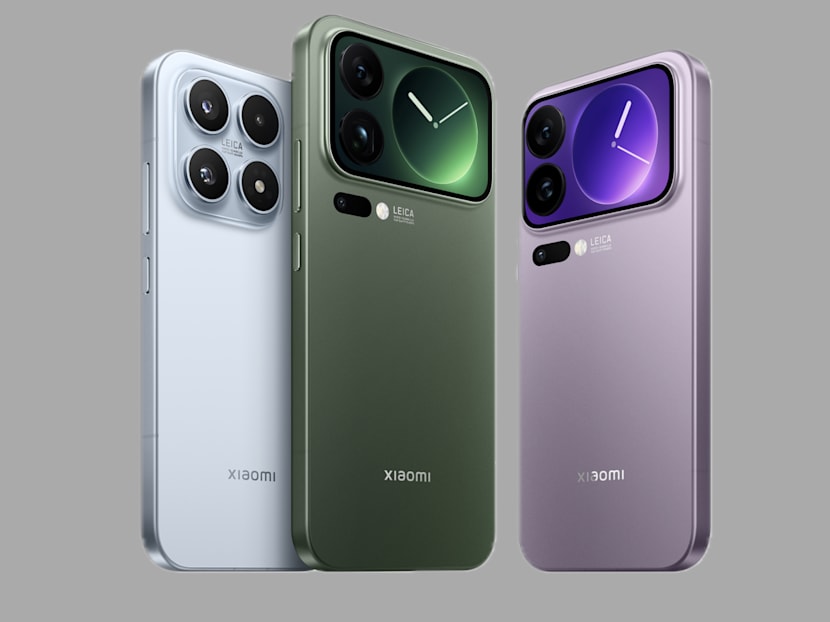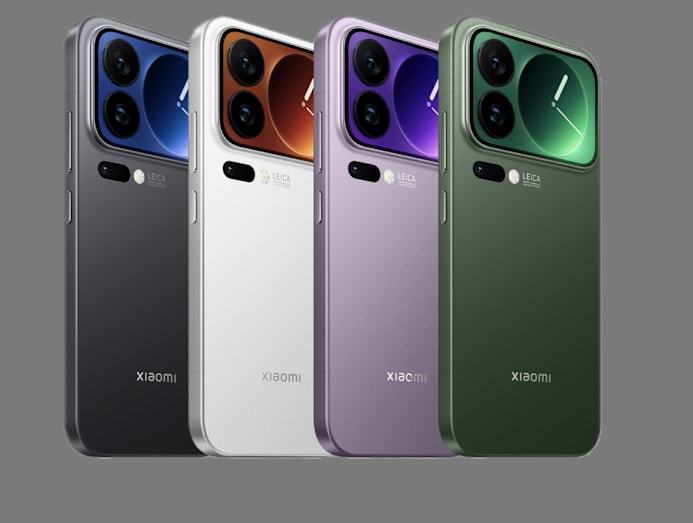Xiaomi unveils 17-series smartphones, ramps up efforts in premium handset market
The Xiaomi 17-series models feature a thin design and a new imaging system co-developed with partner Leica.

Xiaomi's new 17-series. (Photo: Xiaomi)

This audio is generated by an AI tool.
Xiaomi on Thursday (Sep 25) launched its new 17-series smartphones, about two weeks after Apple introduced its iPhone 17 models, as the Beijing-based company ramped up its efforts in the premium handset market.
The models unveiled at an event in Beijing were the standard Xiaomi 17 and flagship models, the Xiaomi 17 Pro and Pro Max – all of which run Qualcomm’s Snapdragon 8 Elite Gen 5 processor.
At the launch, Xiaomi founder, chairman and CEO Lei Jun touted the new 17-series models’ thin design and a new imaging system, suitable for backlight photography, that was developed through a partnership with German optical giant Leica.
The standard Xiaomi 17 model starts at 4,499 yuan (US$632), while the 17 Pro and Pro Max models – both of which feature a back screen to display images or notifications – cost 4,999 yuan and 5,999 yuan, respectively.

Xiaomi’s latest devices show the company’s sharpened focus to compete in premium-priced smartphones, handsets that cost more than US$600.
In a rare move, Xiaomi’s latest smartphones jumped from the 15 series, which was launched in October 2024, to the 17 series.
Rather than “riding on Apple publicity”, Xiaomi’s change in model numbering reflected the significant enhancements in the new series, according to Lu Weibing, president of Xiaomi’s smartphone business.
Xiaomi has been eyeing growth in high-end phones globally, according to Ivan Lam, senior analyst at Counterpoint Research.
“Xiaomi’s strength [in the premium segment] is that it brings advanced features to the entry-tier models of premium lines, which benefit consumers,” Lam said. “It has also consistently invested in imaging systems to match those of Apple.”
The global premium handset segment grew by 8 per cent in the first half of 2025, compared with a 4 per cent increase in the overall smartphone market, according to Counterpoint data.
Xiaomi’s premium smartphone shipments grew 55 per cent in the first half, second only to Google’s increase in the same period, the research firm said.
Xiaomi also has an edge in terms of an expanded ecosystem – from home appliances to electric vehicles – that caters to local consumers’ preferences, as well as the use of artificial intelligence in their devices, according to Lam.
Apple earlier this month launched its iPhone 17 series to global acclaim. On the mainland, sales of the new iPhones had a robust start, according to order volumes reported by local e-commerce platforms.
Consultancy TrendForce projected that global shipments of the iPhone 17 series would be 3.5 per cent higher than those of last year’s iPhone 16 models, with the Pro models remaining the primary sales driver.
Apple has yet to bring its Apple Intelligence function to China, which the company said is subject to regulatory approval.
This article was first published on SCMP.







